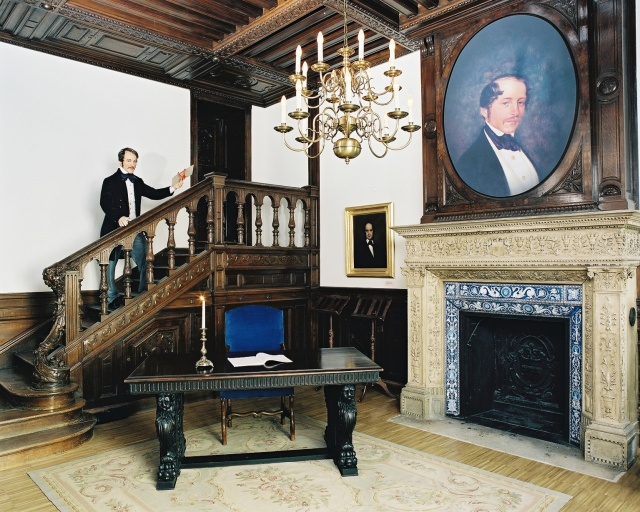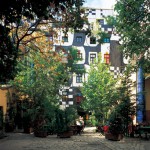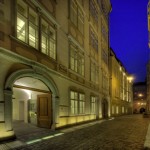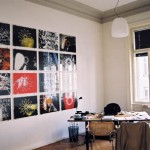ハウス・デール・ミュージック (音の博物館)Haus der Musik (The Sound Museum)

Photo © Haus der Musik
ウィーンのハウス・デール・ミュージック (音の博物館) は、2000年の6月15日に開館。建物は街の中心に位置し、施設はテーマ別に6つのフロアーに分けられ、周囲3キロ四方にも渡る。1階部分は中庭。Haus der Musik (The Sound Museum) of Vienna was inaugurated on June, 15 of 2000. The building is situated right in the city center and offers 3,000 square meters of thematic surface which is divided into six floors.ガラスの屋根と自由にアクセスできる特別展示会用のスペース、楽器を買うことのできる小さな店、入館後でも出入り可能な休憩室がある。
![]()
階段には小さな音声装置が付けられており、他のエリアの案内をしてくれます。2階では世界的にも評価が高く、すばらしいオーケストラの1つ、ウィーン・フィルハーモニー管弦楽団の展示が行われている。ここではオーケストラの歴史をインタラクティブ・タッチ・スクリーン端末にアクセスをして情報を知ることができる。
![]()
大きな2つの装置も同じフロアーにあり、小さなシネマ・スタイルのプロジェクタールームではウィーン・フィルハーモニーのニューイヤーズ・イヴ・コンサートのダイジェストを上映している。またサイコロを振ってワルツを演奏するというインタラクティブな装置もある。このワルツは同じものはまずできないようになっていて、2.5ユーロ払うとこの装置で自身が作曲した曲の証明書を受け取るともできる。
![]()
3階はサウンドやトーンの世界を探求する「ソノスフィア」の展示。この展示が母親の胎内音からはじまり、胎児の記憶を呼び起こさせる。
![]()
ここは知覚の研究所。人間の聴覚の実験や、ピッチ、周波数、間隔を使って、大きな音、小さな音、エコーやひずみの意味について知ることができる。
この知覚の研究所は本当に勉強になるし、インストゥルメンタリウムに従って相互的な経験もできます。非常に特別な装置とその他の相互型端子があるスペースでは自分の声とサンプルのアーカイブを使ったサンプリングの研究ができます。
この階の最後はサウンド・ギャラリー。ここでは実験的な音響体験ができ、巨大な楽器や自分の声をサンプリングして自分だけのCDを作ることもできる。
![]()
4階はウィーンの偉大な作曲者たちを取り扱う展示を行っている。ハイドン、モーツァルト、ベートーベン、シューベルト、シュトラウス、マーラーの生涯が各部屋ごとに紹介されている。
この展示エリアの終わりには見学者がオーケストラの指揮者になれるゲーム「バーチャル・コンダクター」があり、ウィーンフィルの指揮をすることができる。
![]()
5階は「フューチャースフィア」と「ブレイン・オペラ」。マサチューセッツ工科大学の装置を特別展示している。「ブレイン・オペラ」は誰でも音楽を演奏することができる装置。「フューチャースフィア」では自分の声を保存し、自分の声を変化させたり、触ったりし、フューチャー・ミュージック・ブレンダーを通じ、過去の見学者の残した声と合成し、音楽の演奏や作曲をすることができる。
![]()
最上階は特別イベント、コンサート、ライブ、パフォーマンスのためのホールで、150人を収容できる。良いワインと食事とウィーンの眺望を楽しむのには完璧なカフェレストラン。
![]()
ハウス・デール・ミュージックはインタラクティブ体験や、教育に最適な場所。人間の聴覚の限界や、他の動物との比較、珍しい方法で、知識がなくても自分だけの曲を作ることができる。また歴史上の音楽家についても知ることもできる。ハウス・デール・ミュージックはお勧めだ。
![]()
Haus der Musik (The Sound Museum)
住所:Seilerstätte 30, A-1010 Vienna
時間:10:00〜22:00
料金:一般 10,00EUR/学生 (27歳まで) 8,50EUR
TEL:+43 1 516 48
info@hdm.at
http://www.hdm.at
![]()
Text: Eduard Prats Molner
Translation: Haruka Kibata
The ground floor is the courtyard, covered by a glass roof and surrounded by a space dedicated to special exhibitions that can be accessed for free and some little shops where to buy instruments and high quality stereos. The rest of the floors are accessible after checking in.
![]()
The stairs have a little sound installation and will guide us through the different museum areas. In the first floor we find an exhibition dedicated to the Vienna Philharmonic, considered one of the most important and finest orchestras in the world. Here we can learn about the orchestra’s history and use the interactive touch-screen terminals to access to some audiovisual complementary information.
![]()
Two bigger installations are also to be found in the same floor: a little cinema-style projection room offering the highlights of the famous Vienna Philharmonic new year’s eve concert in high fidelity, and an interactive installation that let the visitor compose a waltz by playing the dice. The waltz compositions are rarely repeated, and the visitor can take his own “unique” composition certificate home by paying a 2.50 EUR fee.
![]()
The second floor offers the Sonosphere, an exploratory world of sounds and tones. Right in the entrance, we feel immersed in a beautiful installation that reproduces our most embryonic and remote memories; the sounds of sensations in a womb.
![]()
We spend a long time in the laboratory of perception, a set of interactive pieces that let the user learn more about human audible perception by experimenting and playing with pitch, frequency and space while understanding the real meanings of loud, soft, echo or distortion.
![]()
The laboratory of perception is a truly educative and interactive experience followed by the Instrumentarium, a space with very special instruments and some other interactive terminals where we can explore the art of sampling using our own voice and some archived samples.
![]()
The Sonosphere exhibition ends with the Gallery of sounds, a place where the visitor can hear and experience diverse sounds of very different nature and finally mix them into a final composition using the Evolution Machine, an interactive terminal which let the user not only create the composition but finally burn it into a CD which you can take home for 7 EUR.
![]()
The third floor offers an exhibition dedicated to the most important and influential composers in Vienna’s history. Haydn, Mozart, Beethoven, Schubert, Strauss and Mahler are some of the featured composers so far. The artistic installation Exodus remembers all musicians that were expelled or assassinated during the second world war, and at the end of the exhibition area, we find the Virtual Director installation, a game that allows visitors to become an orchestra’s director.
![]()
The fourth floor presents Futuresphere, a futuristic view to music and composition featuring Brain Opera, an installation by the M.I.T. Media Lab where the visitors can explore alternative ways of playing, making and touching music. In Futuresphere you can move, touch or use your voice to contribute to a gigantic composition delivered by the Future Music Blender.
![]()
The last floor offers a concert hall with 150 sits which is dedicated to special events, concerts and live performances. We finally end our journey in the great Café-Restaurant of the museum, a perfect place for enjoying a good selection of wine and food.
![]()
Haus der Musik is a great educative and interactive experience. You can learn about human audition capacities, compare them to other animals, make your own music in a rare way, direct an orchestra and know more about the greatest musicians in our history. Visiting Haus der Musik is very recommended to everybody!
![]()
Haus der Musik (The Sound Museum)
Address: Seilerstätte 30, A-1010 Vienna, Austria
Open: 10:00-22:00
Entrance Fee: Adults 10,00EUR / Students (under 27), Senior citizens, Challenged persons 8,50EUR
Tel: +43 1 516 48
info@hdm.at
http://www.hdm.at
![]()
Text: Eduard Prats MolnerHaus der Musik (声音博物馆)
地址:Seilerstätte 30, A-1010 Vienna
时间:10:00-22:00
承认:成人 10.00EUR/学生 (27至) 8.50EUR
电话:+43 1 516 48
info@hdm.at
http://www.hdm.at



